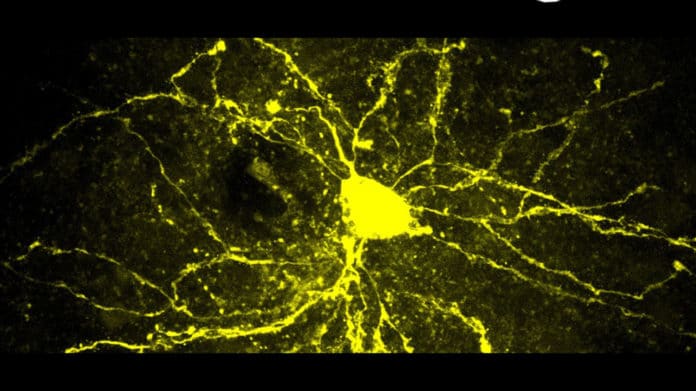Autism Spectrum Disorder (ASD) is a neurodevelopmental disease characterized by social deficits and repetitive behaviors. The disease is believed to be caused by mutations in the SHANK3 gene.
Such patients have characteristic behavioral difficulties. However, the important heterogeneity of their symptoms remains one of the major questions for scientists and physicians.
Recently, UNIGE scientists within the Synapsy National Centre of Competence in Research have shed light on how a change in cell environment triggers the onset of autistic symptoms in mice with a genetic vulnerability.
Scientists started by determining this process and thus deciphering how the symptoms appear. They studied so-called heterozygous mice, i.e., mice carrying a deletion of only one of the two copies of the SHANK3 gene but not showing social behavioral disorders.
With 1-2% of all autism cases, this is indeed one of the most common monogenic causes of the disease.
Camilla Bellone said, “Humans carry a mutation in only one of the two copies of SHANK3, a gene that is essential for the functioning of synapses and communication between neurons. In animal models of the disease, however, mutation of a single copy of SHANK3 only slightly affects the behavior of mice, which explains why the behavioral phenotypes observed are not homogeneous.”
Scientists first constrained the expression of SHANK3 in the neural networks of the reward system. They aimed to identify the other genes whose expression was modified.
Several genes related to the inflammatory system were identified, including Trpv4, which is also engaged with the working of communication channels between neurons.
Camilla Bellone said, “By inducing massive inflammation, we observed an overexpression of Trpv4, which then led to a neuronal hyperexcitability concomitant to the onset of social avoidance behaviors that our mice did not exhibit until now. Moreover, by inhibiting Trpv4, the scientists were able to restore normal social behavior.”
“This provides evidence that autistic disorders are indeed the result of an interaction between genetic susceptibility and an external trigger – in this case, massive inflammation. Neuronal hyperexcitability disrupts communication channels, thereby altering the brain circuits governing social behavior.”
“This would also explain why the same genetic predisposition can lead, depending on the environmental factors encountered and the type of inflammation they trigger, to a diversity of symptoms of equally variable severity.”
When scientists induced the inflammation in adult animals, they noticed that the resulting deficit in social behavior was reversible and disappeared naturally after a few days.
Camilla Bellone said, “We now need to replicate our research during the critical phases of neurodevelopment — i.e., during gestation and immediately after birth — to observe the impact of hyperexcitability on the developing neural networks. This could damage the construction of neural networks beyond repairs.”
The study highlights the necessity of determining environmental factors, which have been largely underestimated until now. It also highlights that the understanding of the mechanisms behind autistic disorders still needs to be refined to intervene effectively.
Journal Reference:
- Tzanoulinou, S., Musardo, S., Contestabile, A. et al. Inhibition of Trpv4 rescues circuit and social deficits unmasked by an acute inflammatory response in a Shank3 mouse model of Autism. Mol Psychiatry (2022). DOI: 10.1038/s41380-021-01427-0
